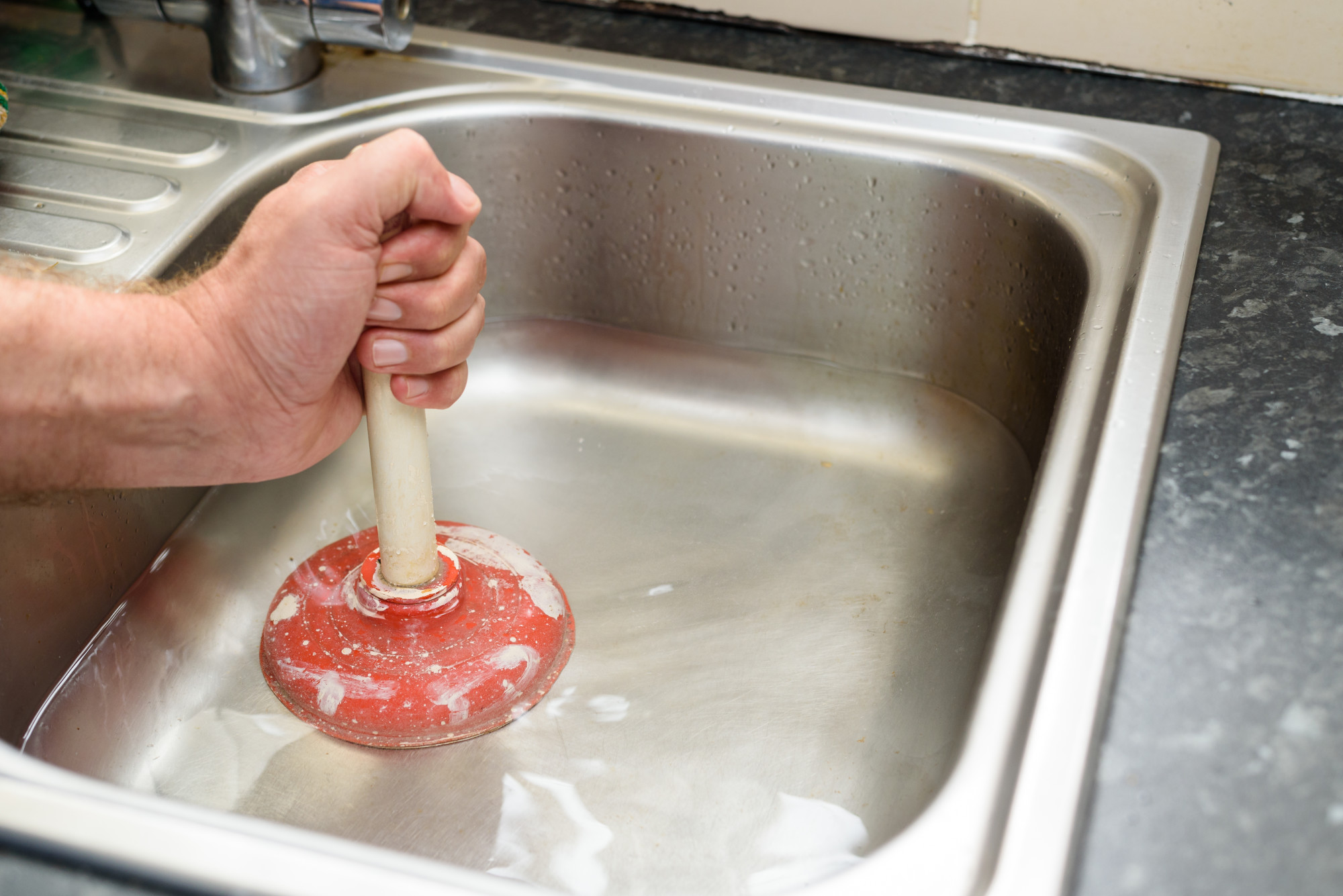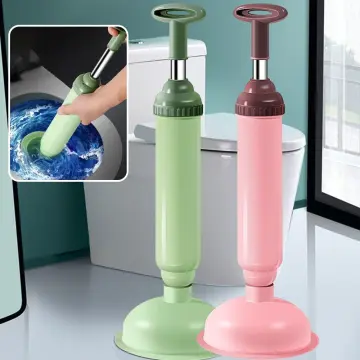How do you feel in regards to How to Unclog Your Sink with a Plunger?

Intro
Proper maintenance of household drains is crucial for protecting against obstructions and making certain smooth water flow. Among the secret devices in every home owner's toolkit is the bettor, along with various drain cleansers made to deal with persistent clogs effectively. This post checks out just how to use bettors and drainpipe cleaners efficiently to maintain your drains moving easily.
Area 1: Understanding Plungers
Sorts of Plungers
There are numerous kinds of bettors offered, each made for various sorts of drains and obstructs. The most typical types consist of mug bettors, flange plungers, and accordion bettors.
Just How Plungers Job
Plungers service the concept of creating pressure and suction to dislodge blockages. When properly applied over a drainpipe, they develop a vacuum cleaner that can pull out particles or separate obstructions.
Selecting the Right Bettor
Picking the appropriate bettor depends upon the kind of drainpipe and the nature of the blockage. Cup bettors are perfect for sinks and tubs, while flange plungers are better matched for toilets as a result of their style.
Typical Blunders with Bettors
Avoiding these blunders guarantees effective plunging: incorrect seal around the drainpipe, not enough force, and not clearing surrounding particles.
Section 2: Using Plungers Successfully
Prep work
Before plunging, make certain the plunger covers the drainpipe entirely and develops a tight seal. Clear any type of visible debris around the drain opening.
Technique
Begin with mild plunging movements to develop suction. Increase stress slowly, making use of a constant rhythm. Repeat as needed till the drain clears.
Repairing Tips
If plunging doesn't function, try adjusting the seal, applying petroleum jelly for a better seal, or making use of a various type of bettor.
Section 3: Recognizing Drainpipe Cleansers
Sorts Of Drainpipe Cleaning Company
Drain cleaners can be chemical or enzymatic. Chemical cleaners make use of strong chemicals to liquify clogs, while chemical cleaners make use of all-natural enzymes to break down organic matter.
Just How Drainpipe Cleaners Job
Chemical cleaners respond with clogs to dissolve them, while enzymatic cleansers break down organic materials like hair and oil without damaging pipes.
Safety Factors to consider
Always wear gloves and eye defense when utilizing chemical drainpipe cleaners. Guarantee sufficient ventilation and adhere to producer directions very carefully.
Eco-Friendly Alternatives
Take into consideration utilizing vinegar and baking soda or enzyme-based cleaners for eco-friendly alternatives that are safer for pipelines and the environment.
Area 4: Making Use Of Drainpipe Cleansers Successfully
Application Methods
Pour chemical cleaners directly into the drain opening. Permit them to help the advised time prior to purging with hot water. Enzymatic cleaners should sit over night.
Precautions
Avoid mixing different kinds of cleansers, as this can create poisonous fumes. Never ever make use of chemical cleansers combined with a plunger, as spilling can happen.
Managing Stubborn Blockages
For persistent obstructions, take into consideration utilizing a plumbing serpent or calling a professional plumbing professional to stop damage to pipes.
Final thought
Finally, understanding exactly how to utilize plungers and drainpipe cleansers successfully is crucial for keeping healthy pipes systems. By selecting the right devices and strategies, home owners can deal with minor obstructions and prevent major pipes problems down the line.
How To Properly Use A Plumbing Snake To Clear Drains
When any drain clogs in our home arise, we tend to gravitate toward the plunger and little else. In cases where the plunger and its vacuum-created pressure are not able to clear clogs, many immediately move to harmful chemicals or simply call their plumber to fix the issue.
we’re happy to help with all drain cleaning needs and concerns. This includes informing you on a few other home remedies you may have at your disposal for minor to moderate clogs, one of which is the use of a plumbing snake. Many people have never used one of these before – let’s go over the steps to take when your drain clogs and you have a plumbing snake available.
Attempt Plunger Use
The first step here, as we noted above, should indeed be to grab your plunger when you notice a drain clog and attempt to resolve it this way. If you’re unsure how to use a particular type of plunger, our plumbers can answer any questions you have. If this doesn’t do the trick, however, you move on to the snake.
Locate And Prepare Snake
A plumbing snake is a metal or plastic device that’s generally about a quarter of an inch thick. It’s design with significant extensions, meant to reach down into your clogged drain and push the clog out. Snakes also contain drain augers that will latch onto and push stubborn blockages.
If your plunger doesn’t clear a clog, locate your snake and bring it to the drain in question. We also recommend keeping a bucket nearby to collect the clog once you pull it out, plus we’d advise wearing goggles and possibly protective gloves.
Feed Snake
Once you’re ready to go, feed the snake slowly down the drain, using the crank device it comes with to keep it moving until it finds the clog. Once this happens, much of the clog will be latched onto the coil so you can pull it out, while the rest will simply break up and flow downward.
Detach Debris
Remove the snake slowly from the drain, and once you’ve done so, pick off any debris that’s stuck to the coil. This is another area where wearing gloves is a must.
Flush Drain
Finally, take a few minutes to ensure the snake has done its job correctly. If you’ve been using it on a toilet, flush the toilet a couple times and make sure everything flows well. If you’ve used it on a different drain, flush it with some room temperature water.
https://www.mybuddytheplumber.com/blog/how-to-properly-use-a-plumbing-snake-to-clear-drains/

Application Methods
Pour chemical cleaners directly into the drain opening. Permit them to help the advised time prior to purging with hot water. Enzymatic cleaners should sit over night.
Precautions
Avoid mixing different kinds of cleansers, as this can create poisonous fumes. Never ever make use of chemical cleansers combined with a plunger, as spilling can happen.
Managing Stubborn Blockages
For persistent obstructions, take into consideration utilizing a plumbing serpent or calling a professional plumbing professional to stop damage to pipes.
Final thought
Finally, understanding exactly how to utilize plungers and drainpipe cleansers successfully is crucial for keeping healthy pipes systems. By selecting the right devices and strategies, home owners can deal with minor obstructions and prevent major pipes problems down the line.
How To Properly Use A Plumbing Snake To Clear Drains
When any drain clogs in our home arise, we tend to gravitate toward the plunger and little else. In cases where the plunger and its vacuum-created pressure are not able to clear clogs, many immediately move to harmful chemicals or simply call their plumber to fix the issue.
we’re happy to help with all drain cleaning needs and concerns. This includes informing you on a few other home remedies you may have at your disposal for minor to moderate clogs, one of which is the use of a plumbing snake. Many people have never used one of these before – let’s go over the steps to take when your drain clogs and you have a plumbing snake available.
Attempt Plunger Use
The first step here, as we noted above, should indeed be to grab your plunger when you notice a drain clog and attempt to resolve it this way. If you’re unsure how to use a particular type of plunger, our plumbers can answer any questions you have. If this doesn’t do the trick, however, you move on to the snake.
Locate And Prepare Snake
A plumbing snake is a metal or plastic device that’s generally about a quarter of an inch thick. It’s design with significant extensions, meant to reach down into your clogged drain and push the clog out. Snakes also contain drain augers that will latch onto and push stubborn blockages.
If your plunger doesn’t clear a clog, locate your snake and bring it to the drain in question. We also recommend keeping a bucket nearby to collect the clog once you pull it out, plus we’d advise wearing goggles and possibly protective gloves.
Feed Snake
Once you’re ready to go, feed the snake slowly down the drain, using the crank device it comes with to keep it moving until it finds the clog. Once this happens, much of the clog will be latched onto the coil so you can pull it out, while the rest will simply break up and flow downward.
Detach Debris
Remove the snake slowly from the drain, and once you’ve done so, pick off any debris that’s stuck to the coil. This is another area where wearing gloves is a must.
Flush Drain
Finally, take a few minutes to ensure the snake has done its job correctly. If you’ve been using it on a toilet, flush the toilet a couple times and make sure everything flows well. If you’ve used it on a different drain, flush it with some room temperature water.
https://www.mybuddytheplumber.com/blog/how-to-properly-use-a-plumbing-snake-to-clear-drains/

Do you like more info about Tips on How to Effectively Use a Plunger? Try to leave a review down the page. We would be delighted to hear your insights about this posting. Hoping to see you back again in the future. Are you aware of somebody else who is excited about the subject? Do not hesitate to share it. Thanks a lot for your time. Kindly stop by our website back soon.
Quote & Schedule